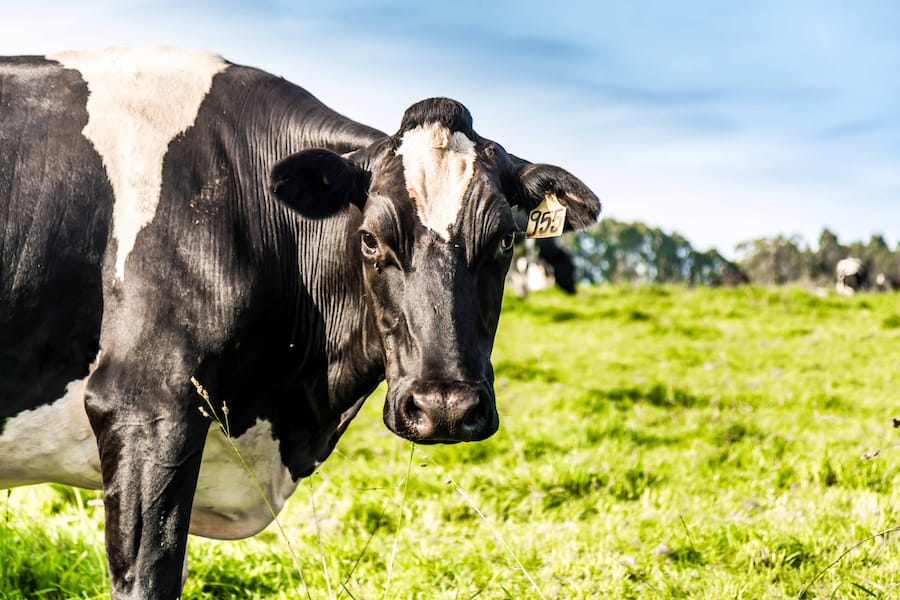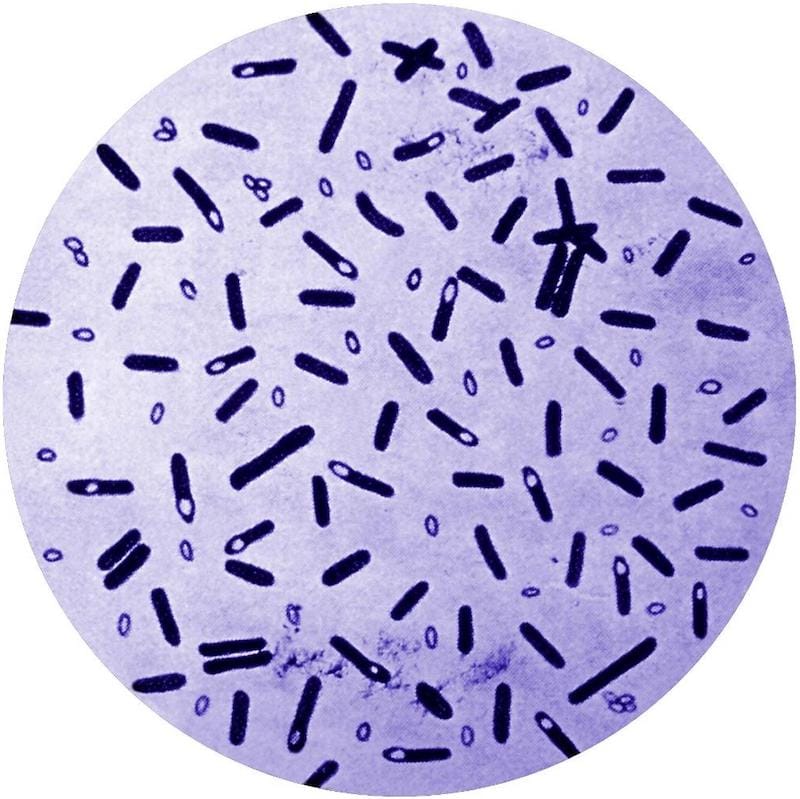Australia has been free of some of the world’s most serious animal diseases like foot-and-mouth disease and avian influenza.
Having said that, there are a whole bunch of other serious livestock diseases that continue to pose major threats to the livestock industries and threaten to play spoilsport to our export success stories.
Diseases that affect cattle are mostly due to:
- Bacteria, viruses and fungi that cause infections
- Parasite infestations
- Nutrition deficiencies
- Metabolic disorders
Sometimes, these diseases work in really sneaky ways. Your cows may not really exhibit very obvious symptoms but the diseases could lurk in their bodies and slowly you may start noticing:
- A decline in reproductive rates
- Lower milk production
- Lower growth
- Hide damage
It’s always good to keep yourself well-informed of major cow diseases so you can spot them early, and take the necessary cures as well as preventive measures.

Let’s discuss some of the major diseases that affect cows:
Anthrax
Anthrax is caused by a bacteria called Bacillus anthracis that produces spores when exposed to air. This bacteria can actually live in soil for more than 50 years but if the soil is moist with active microbes, then it can last for up to 4 years.
When the spores enter into the body either via ingestion, inhalation, or through a wound, the bacteria multiply at dizzying speeds and the toxins take over the immune system of the animal causing sudden death.
Anthrax usually occurs in a humid climate or when the weather changes suddenly like when it pours after a long drought. If your animals die suddenly with blood around the nose, mouth, or anus, then it’s most likely due to anthrax.
Mad cow disease
While this disease probably sounds like the name of a fun and fresh ice cream brand, it’s really very far from that! Mad cow disease or ‘Bovine Spongiform Encephalopathy’ (BSE) as the scientists call it, is a disease of the brain. When looked at from a microscope, the brain appears to look spongy.
BSE is a progressive neurologic disease that affects cows. It tends to gradually get worse and worse over time and it damages the cow’s central nervous system that is the brain and the spinal cord.
A normal prion protein in a cow could suddenly transform into an abnormal prion protein which is what causes BSE. Since the cow’s body doesn’t know that a normal protein has transformed into an abnormal protein, it is unable to react to the disease and fight it.
Ok, so the cow’s body may not be able to realise that it has an abnormal protein living inside it, but we sure can. The most common and easy-to-spot symptom in cows with BSE is a lack of coordination. A sick cow will not be able to easily walk or get up. It may also act very nervous, edgy, or violent which is why BSE is also referred to as ‘mad cow disease’.

It usually takes about 4 – 6 years for a cow to have BSE and then exhibit its first symptoms. During this time, there’s no way to tell if a cow has BSE since it will be going about life as usual. After 4 – 6 years, when it starts to show symptoms, it continues to get sick, weak and die. Currently, there are no preventive measures or cure for BSE.
Calf scours
Scours is another way of saying diarrhea. Cattle of any age can develop diarrhea but calf scours usually occur in calves under one month of age. Most of the diseases reported were in calves who were 3 – 16 days of age. Scours are usually caused by viruses, parasites and bacteria.
The scouring calf becomes weak, dehydrated, loses essential body chemicals like sodium and potassium and experiences build-up of acids.
Calf scours can be caused in two ways – infectious and non-infectious.
Noninfectious causes of calf scours:
- Insufficient nutrition during pregnancy, especially a deficiency of vitamin A and E.
- If the newborn calf is exposed to muddy and contaminated feedlots, overcrowding, calving heifers and cows together, wintering and calving in the same zone, heavy snow, or any extreme weather conditions, it could be very stressful to the newborn calf and increases exposure to infections. The wet and cold newborn calf is drained of body heat and warmth and lacks the energy to nurse enough amounts of colostrum in its early life.
- The calf has to nurse the colostrum right after birth. The clock is ticking and at every hour, the newborn calf actually loses its ability to absorb colostral antibodies. In fact, colostrum given to calves that are 24 – 36 hours old is virtually useless because in most cases, antibodies cannot be absorbed so late in life.
Infectious causes of calf scours:
These are usually due to bacteria like Escherichia Coli, Salmonella spp, Clostridium perfringens, etc, viruses like rotavirus, coronavirus, BVD virus, IBR virus, protozoan parasites like Coccidia and Cryptosporidium, yeasts and molds.
Enzootic Bovine Leukosis
This disease, commonly referred to as EBL since it’s quite a mouthful, usually occurs in adult cattle who are infected with the bovine leukosis virus.
Cattle over three years of age usually develop persistent lymphocytosis and some other develop lymphosarcomas, also known as tumors, in their internal organs which lead to death.
EBL travels from one cow to another via blood. Even 1 microliter of blood, a quantity that is not even visible to the human eye *cue dramatic music*, can cause EBL. Using the same needles for different cattle, or the same instruments like dehorners, ear tagging, etc. is enough to transfer this teeny tiny bit of blood.
Since the virus causing EBL gets transmitted into the animal’s DNA, medications are not available or effective for the cattle. Once cattle are infected, they continue to be infected for the remainder of their lives.
Symptoms include large lumps in the neck, shoulder, flanks and protruding eyeballs. Tumors inside the body can cause digestive, reproductive and heart issues while tumors in the spinal cord mean that cows are most often unable to use their hind legs.
Clostridial diseases:
Clostridial diseases are caused by anaerobic bacteria that are present in the environment. They’re often found in soil and often fatal.
When are clostridial diseases likely to occur?
- In animals that aren’t vaccinated
- Tetanus - when the cow has penetrating wounds, foot trimming wounds, or during dehorning and grass seed punctures
- Blackleg – when muscle bruising happens in growing animals
- Black disease – during infections of the liver
- Malignant oedema – this happens during wounds in females who have recently given birth
- Pulpy kidney caused by a sudden change in feeding or heavy grain feeding
- Botulism – this happens when cattle graze land that’s deficient in protein and phosphorous
The major signs of clostridial diseases (as listed above) are:
Tetanus
The animal will have a stiff-legged gait and frequent convulsions that are brought upon by sound and touch
Blackleg
Swelling on the legs and severe lameness. Animals with this disease usually have a fever, dry and damaged hides and may suddenly die.
Black disease
Animals with black disease are usually quiet, not active and have severe abdominal pain. Again as in the case of blackleg, sudden death is common here as well.
Malignant oedema
Cows that have just given birth may have contaminated wounds that are slightly swelled up. Death is common in this case too.
Pulpy kidney
Cows with pulpy kidney experience frequent convulsions and death
Botulism
Animals with botulism have paralysed tongues. Due to this, they refuse to eat and drink. This makes them weak and dehydrated. In some cases, there may be paralysis of the back and front legs. Some animals tend to be frustrated and aggressive.

Effective vaccines have been developed for blackleg, malignant edema, red nose and a host of other life-threatening diseases. Antibiotics that work against a wide variety of microorganisms have also helped keep cattle healthy.
As long as you keep a watchful eye on the parasites, viruses and bacteria in your air and soil, vaccinate your cows regularly, provide high-quality colostrum to newborn calves and maintain hygienic conditions in your lots as well as provide nutritious forage to your cows, we’re sure these diseases aren’t going to claim your cows!
Until we meet again, Happy Farming!
- The Dedicated Team of Pasture.io, 2020-10-16